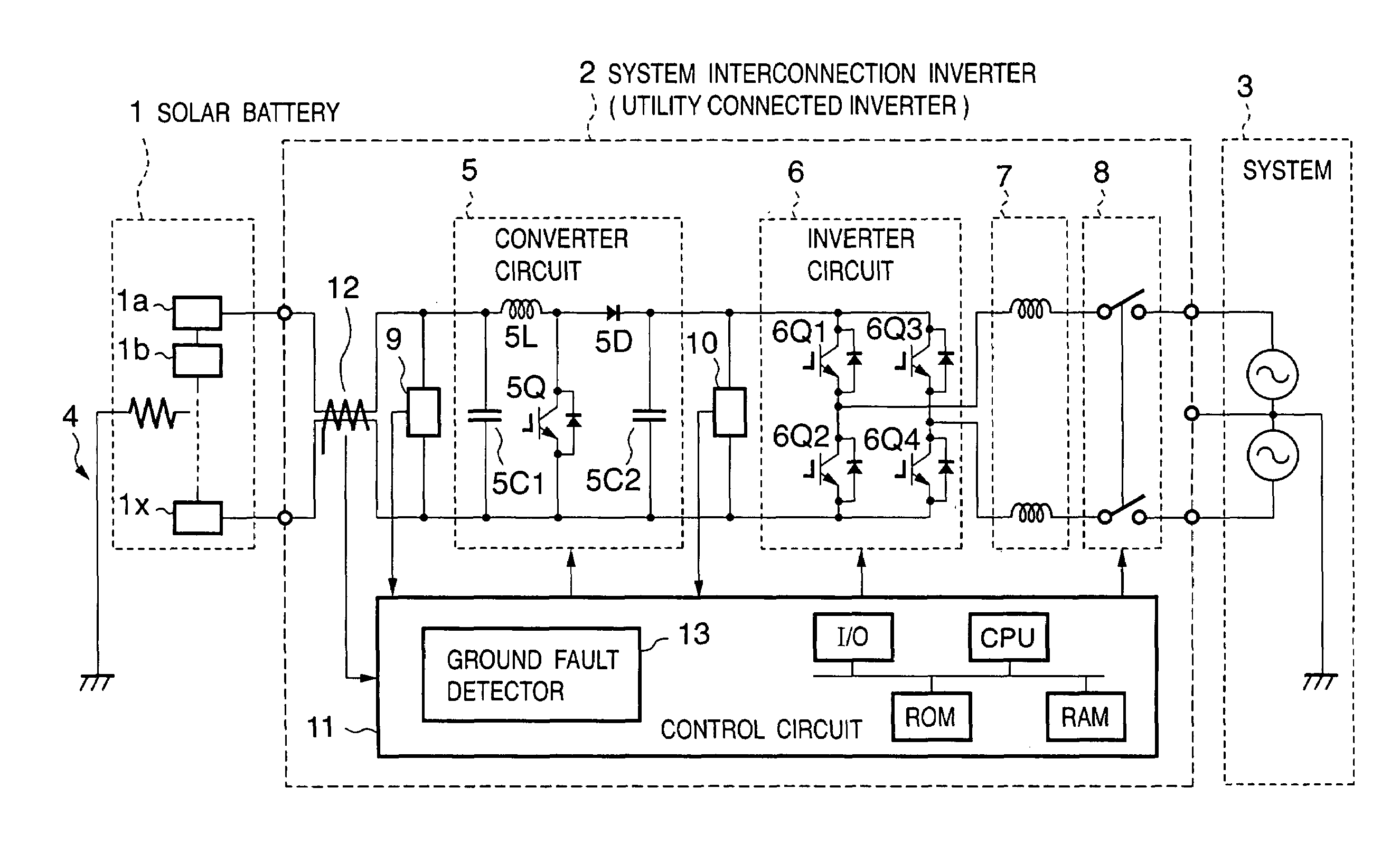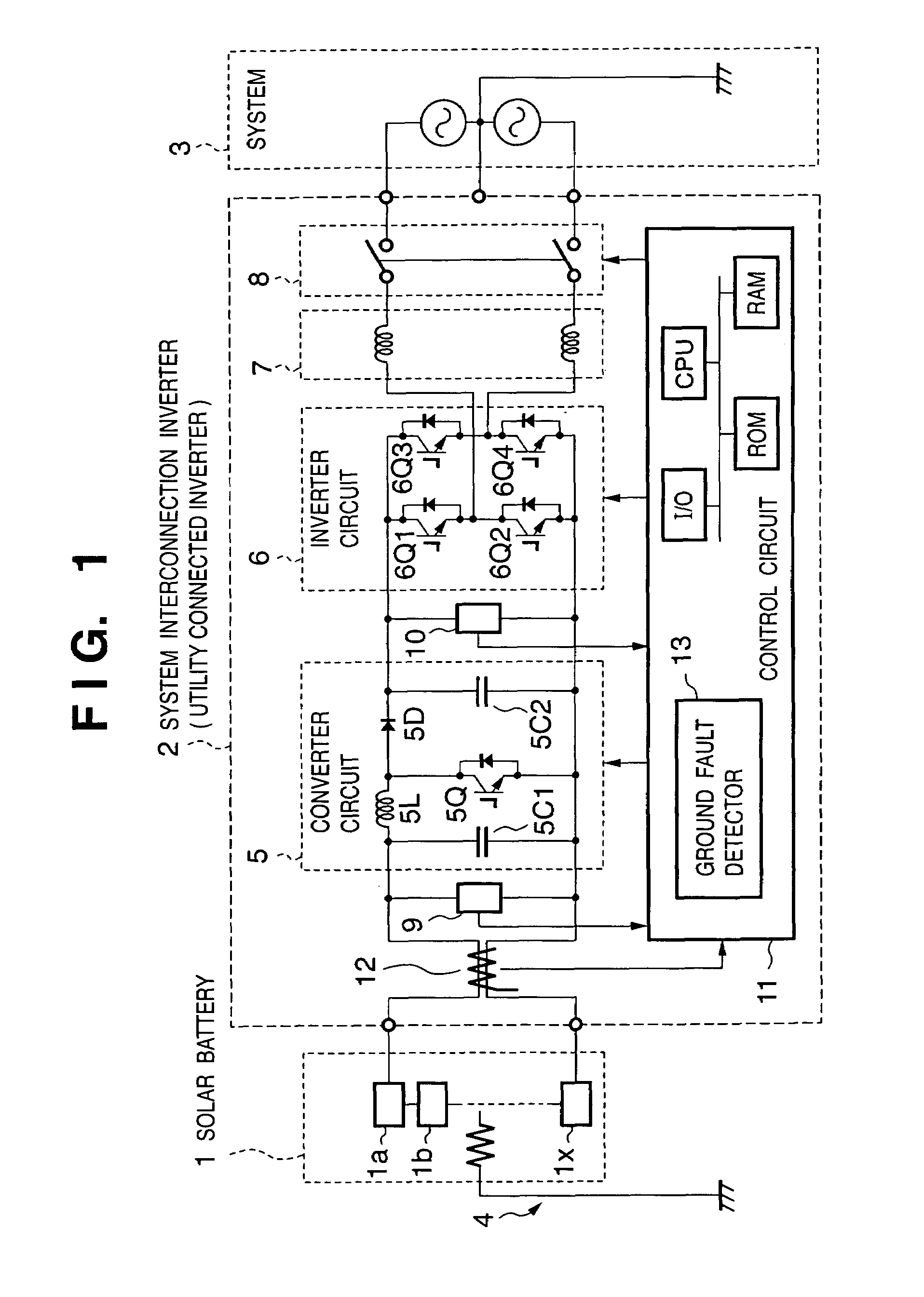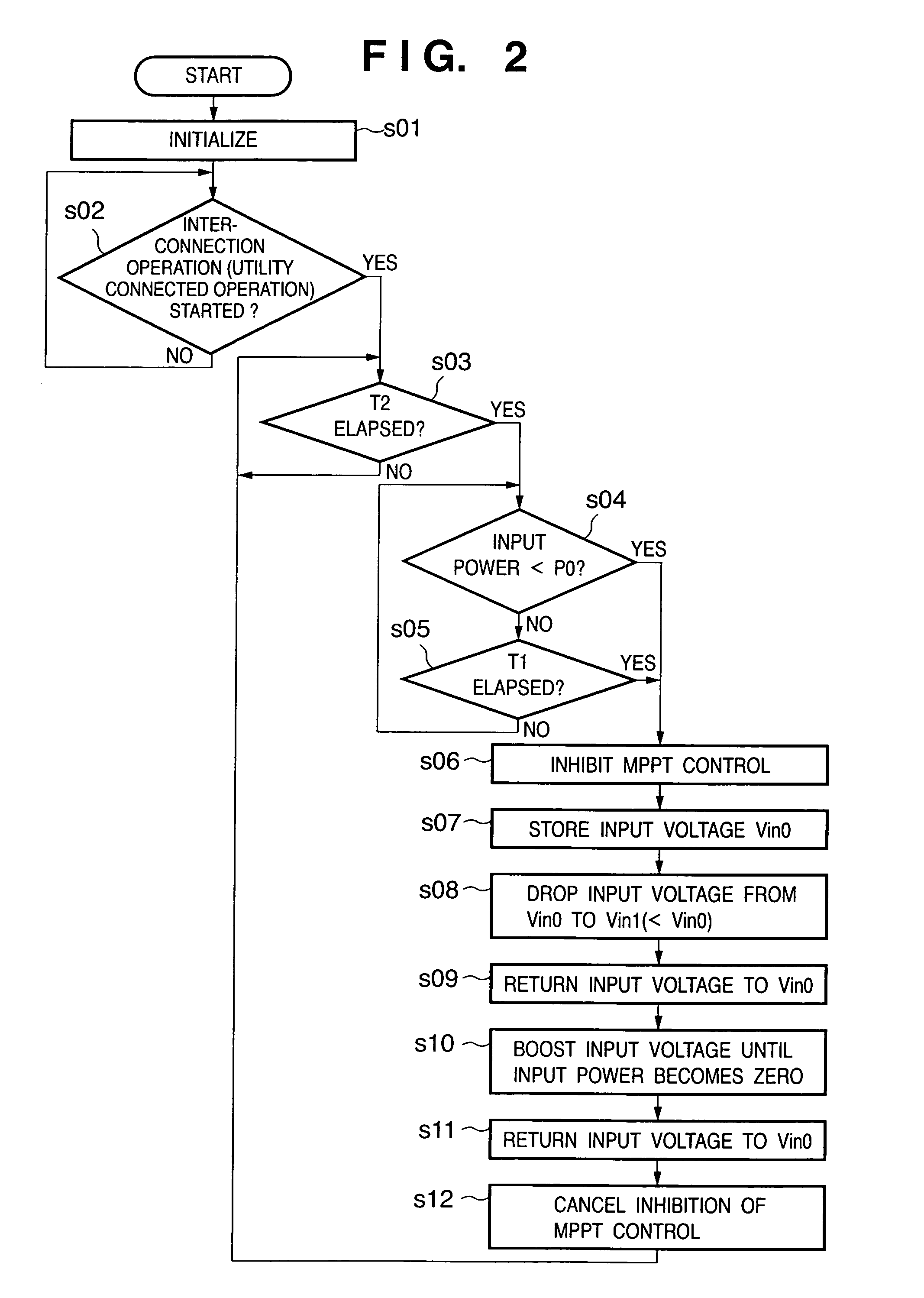Power converting apparatus, control method therefor, and solar power generation apparatus
a power conversion and control method technology, applied in the field of inverters, can solve the problems of long time, long time, and unrecognized ground faults, and achieve the effect of short tim
- Summary
- Abstract
- Description
- Claims
- Application Information
AI Technical Summary
Benefits of technology
Problems solved by technology
Method used
Image
Examples
first embodiment
[0041]Ground fault detection operation in a system interconnection inverter (an utility connected inverter) 2 according to the first embodiment will be described next. The system interconnection inverter 2 has the same arrangement as in FIG. 1. In the first embodiment, an intermediate voltage Vm is kept constant, and only an input voltage Vi is changed.
[0042]FIG. 2 is a flow chart showing voltage control in the ground fault detection operation. The voltage control is executed by a control circuit 11. When the control circuit 11 starts operating, various initialization operations are executed in step s01, as shown in FIG. 2. The control waits until interconnection operation (utility connected operation) starts in step s02. If YES in step s02, the flow advances to step s03.
[0043]It is determined in step s03 whether the time (to be referred to as an “operation time”) from the start of interconnection operation exceeds a second predetermined time T2. If YES in step s03, the flow advance...
second embodiment
[0070]The second embodiment will be described next. The system interconnection inverter (the utility connected inverter) of the second embodiment has the arrangement of a system interconnection inverter (an utility connected inverter) 2 shown in FIG. 1, as in the first embodiment. In the first embodiment, the input voltage is controlled to control the potential to ground. In the second embodiment, not only the input voltage but also the intermediate voltage is controlled.
[0071]FIG. 7 is a graph showing a variation in potential to ground of a solar battery 1 when both the input voltage and the intermediate voltage are controlled, in which the abscissa represents time, and the ordinate represents the potential to ground of the solar battery 1, as in FIG. 4. Normal operation continues until time t10. During this period, the potential to ground of the positive line of the solar battery 1 is VA0, and that of the negative line of the solar battery 1 is VB0.
[0072]Control to vary the potent...
third embodiment
[0085]The third embodiment will be described next. The system interconnection inverter (utility connected inverter) of the third embodiment has the arrangement of a system interconnection inverter (an utility connected inverter) 2 shown in FIG. 1, as in the first embodiment. The potential to ground is controlled by controlling the input voltage, as shown in FIG. 4 of the first embodiment. The distribution of potentials to ground in a solar battery 1 is the same as in FIG. 5. The third embodiment is different from the first embodiment in that a ground fault detector 13 has two ground fault detection levels.
[0086]FIG. 9 is a graph showing the boundaries of detectable ground fault resistance values that are obtained from the values shown in FIG. 5 and the ground fault detection levels (25 mA and 20 mA) of the ground fault detector 13. The abscissa represents a position x in the solar battery 1, and the ordinate represents the resistance value between the position x and the ground poten...
PUM
 Login to View More
Login to View More Abstract
Description
Claims
Application Information
 Login to View More
Login to View More - R&D
- Intellectual Property
- Life Sciences
- Materials
- Tech Scout
- Unparalleled Data Quality
- Higher Quality Content
- 60% Fewer Hallucinations
Browse by: Latest US Patents, China's latest patents, Technical Efficacy Thesaurus, Application Domain, Technology Topic, Popular Technical Reports.
© 2025 PatSnap. All rights reserved.Legal|Privacy policy|Modern Slavery Act Transparency Statement|Sitemap|About US| Contact US: help@patsnap.com



